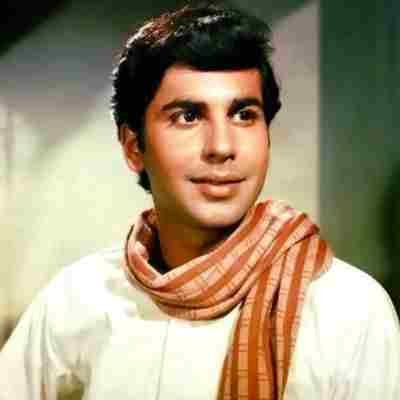Govindan Aravindan

Subscribe to read full article
This section is for paid subscribers only. Our subscription is only $37/- for one full year.
You get unlimited access to all paid section and features on the website with this subscription.
Not ready for a full subscription?
You can access this article for $2 , and have it saved to your account for one year.
- Born: 21/01/1935 (Kottayam)
- Died: 15/03/1991 (Thiruvananthapuram)
- Primary Cinema: Malayalam
- Parents: M N Govindan Nair
Very few filmmakers have mastered the art of speaking as much with silence as with words. The Malayali maestro Govindan Aravindan can count himself among those few. An enigmatic and incredibly influential voice, his films transcended regional boundaries and created a visual repertoire unlike any other.
Govindan Aravindan was born on 21 January 1935 to M N Govindan Nair, a celebrated satirist. His early years were spent in a teeming hub of artists and writers in Kottayam. It instilled in the young Aravindam a passion for drawing and writing. He was also interested in classical music and was an aficionado of Rabindra Sangeet. He was deeply involved in Malayali theatre, bringing transformative changes with the principles of thanathu natakavedi (original theatre). He wrote the satirical comic strip Cheriya Manushyarum Valiya Lokavum in the Mathrubhoomi weekly, featuring the adventures of working class hero Ramu and Guruji. He also wrote the occasional comic strip A Bird’s Eye View for the Kala Kaumudi journal. Fellow Malayali filmmaker Adoor Gopalakrishnan played a role in getting him interested in cinema. He was also supposed to be the art director for Gopalakrishnan’s first feature Kamini (1969), but the film was never finished. His early work was an example of Calicut modernism and was influenced by the works of the artist Devan, playwright Thikkodiyan and writer Pattathiruvila Karunakaran. This group also had tremendous influence on his first feature film Uttarayanam (1975) which was based on a story by Thikkodiyan.
Almost an extension of the critique of contemporary society in his comic strips, Aravindam’s portrayal of Malabari life received widespread acclaim. It received a Special Jury mention at the National Film awards. His next film Kanchana Sita (1977) saw him take a more philosophical and contemplative turn. Based on the post-Lanka period of the Ramayana and a play by C N Sreekantan Nair, the film was daringly experimental and has been compared with the works of Ingmar Bergman and Andrei Tarkovsky. It has been hailed as a feminist interpretation of the Uttara Kanda. He further expanded on his style in the ‘location film’ Thampu (1978), eschewing conventional narrative structure for a free-flowing exploration of village life. The film bagged him the Best Director prize at the National Film Awards. In his later works the influence of mystical painter K.C.S Panicker was noticeable.
With his next two films Kummatty (1979) and Esthappan (1979), he undertook an exploration of folklore and mythology. Both films contained touches of magical realism and had deep roots in Kerala’s folklore. His following film Pokkuveyil (1982) featured music by Pandit Hariprasad Chaurasia and featured the poet Balachandran Chullikad in the lead role. The film was edited in tune with a musical structure. Visual arrangements such as these were hitherto unseen on the Indian screen. It was adjudged the second best film of the year at the National Film Awards. This was the last film produced by his long term producer Ravi.
Chidambaram (1985) came four years later and its box office prospects were boosted by the star casting of Smita Patil, Bharath Gopi and Sreenivas. It was a departure in style for Aravindam, its relative lack of experimentation making it his most popular film. Oridathu (1987) was his return to his roots. Its satirical style harkened back to his early days as a cartoonist. It even featured a dance by one of the characters. It once again returned him to the pinnacle of the art, winning Best director at both the Kerala State Awards and National Film Awards.
He made two experimental films with the students of Harvard University – Unni (1989) and Marattam (1988). Attempting an interpretation of the popular Kathakali narrative of Keechaka Vadham, Aravindan turned it into a murder mystery in Marattam. The treatment was compared with Akira Kurosawa’s Rashomon (1950). His last film Vasthuhara (1991) was based on a short story by C V Sreeraman and depicted the experiences of Bangladeshi refugees. It starred Mohanlal and Neena Gupta in the lead roles. The film writer Chidananda Dasgupta wrote about the film, ‘There is no intense drama here. But Aravindan beautifully brings together a group of people in his film, though they are separated by their homeland and language and even culture.’
He also made twelve documentaries, usually on the lives of artists and activists like V.T. Bhattathiripad, J Krishnamoorthi and Namboothiri. He also made a seven part series on Bharatanatyam. A man of many talents, Govindan Aravindan composed music for films like Yaro Oral (1978) and Piravi (1988).
Unfortunately Aravindan passed away on 15 March 1991, before he could see the release of Vasthuhara. An original filmmaker who never went by dominant conventions of cinema, his films have become part of Kerala’s cultural identity. The American film journal Film Quarterly once wrote about him, ‘Like Rembrandt’s etchings, the films of Indian director Aravindan guide the eye through the external event to the dreams and hopes people carry within themselves: along with the work of Mani Kaul and Kumar Shahani, Aravindan’s films constitute India’s cinema of inner life.’
References
Image courtesy: Scroll
-
Filmography (11)
SortRole
-
Vasthuhara 1991
-
Unni 1989
-
Marattam 1989
-
Oridathu 1986
-
Chidambaram 1985
-
Pokkuveyil 1982
-
Esthappan 1980
-
Kummatty 1979
-
Thampu 1978
-
Kanchana Sita 1977
-
Uttarayanam 1975
-






.jpg)



